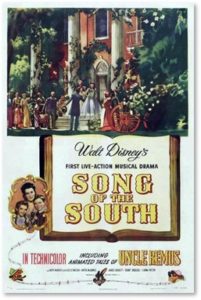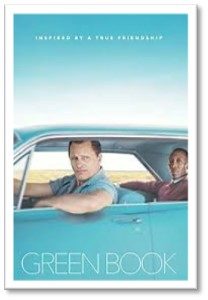“When I think back on all the crap I learned in high school, it’s a wonder I can think at all. And though my lack of education never hurt me none, I can read the writing on the wall.”
Paul Simon, Kodachrome
Current events are forcing many people to re-consider what we learned in school—or more often—what they didn’t learn about Black history in America. I attended both Catholic parochial school and public school, so I have a dual perspective on the curriculum for grades one through 12. While each system was better in some areas, both taught us about the American history we wanted to believe in, not the one we really had.
The Leave It to Beaver History
 In a way, we learned the Leave It to Beaver version of our nation’s history. It’s the one where white men ruled, no one did really bad things, we were always the Good Guys, and America rescued the world. Women and people of color were not present or, if they were, it was in some iconic way like Betsy Ross and John Henry. Homosexuals were not mentioned at all, especially to children.
In a way, we learned the Leave It to Beaver version of our nation’s history. It’s the one where white men ruled, no one did really bad things, we were always the Good Guys, and America rescued the world. Women and people of color were not present or, if they were, it was in some iconic way like Betsy Ross and John Henry. Homosexuals were not mentioned at all, especially to children.
This made for a very comfortable picture, especially if you were white, male and Christian. It didn’t bother me that women had so little place in the history books because women were so marginalized in the fifties and sixties that it seemed normal. Strong white Christian men stood astride the world and dominated it for the good of all.
The Real Story of Black History
The darker stories in American history, including our Black history, somehow never made it into the textbooks, the curricula, the lectures, or the additional reading. We cruised through our classes without ever being confronted by the concept of institutional racism, much less murder, biological warfare, lynching, and genocide.Jim Crow laws governed the South — current events, not history.
There were very few Black people where I grew up in southeastern Massachusetts and none at all in any of my classes..
The Myth in the Movies
 Pictures of happy Black slaves like Aunt Jemima and Uncle Ben appeared in our kitchens, though. Disney’s “Song of the South” showed us a cheerful Uncle Remus, singing and telling folk tales. “Gone With the Wind” depictedan ante-bellum South in which slave labor was a given but the house slaves were treated like members of the family. Slavery seemed regrettable, sure, but not all that terrible. The awful truth remained hidden.
Pictures of happy Black slaves like Aunt Jemima and Uncle Ben appeared in our kitchens, though. Disney’s “Song of the South” showed us a cheerful Uncle Remus, singing and telling folk tales. “Gone With the Wind” depictedan ante-bellum South in which slave labor was a given but the house slaves were treated like members of the family. Slavery seemed regrettable, sure, but not all that terrible. The awful truth remained hidden.
Here are some of the events in Black history , both good and bad, that have been systematically ignored in American schools.
Juneteenth:
A holiday om June 19th celebrating the emancipation of those who had been enslaved in the United States. Specifically, it commemorates Union army general Gordon Granger announcing federal orders in Galveston, Texas, proclaiming that all slaves in Texas were free—two and a half years after President Lincoln read the Emancipation Proclamation.
The Massachusetts 54th Regiment:
A volunteer Union regiment organized in the Civil War and the second all-Black Union regiment to fight. Its members, many recruited in Boston’s African Meeting House, became known for their bravery and fierce fighting against Confederate forces.
The regiment included William H. Carney, the first Black recipient of the Congressional Medal of Honor. You can see its story depicted in the movie Glory.
The Tulsa Race Massacre:
A white assault on the predominantly black Greenwood section of Tulsa, OK. Over 18 hours on May 31 – June 1, 1921, a white mob attacked residents, homes and businesses in one of the worse incidents of racial violence in the United States. It was the first time that bombs were dropped from airplanes on American citizens on US soil.
The death toll may have gone as high as 300—most of them buried in unmarked mass graves. You can see it recreated in HBO’s Watchmen series.
The Rosewood Race Massacre:
An attack on the predominantly African American town of Rosewood, FL, in 1923 by large groups of white aggressors. A mob of several hundred whites combed the countryside hunting for black people and burned almost every structure in Rosewood.
Survivors from the town hid in nearby swamps for several days until they were evacuated by train and car to larger towns. The death toll—both Black and white—remains unconfirmed. The town was never rebuilt.
The Green Book:
 Until the movie of the same name came out in 2018, most white people I know had no idea that (A) this book existed or (B) why it had been written. It never occurred to white people that Black people could not travel freely in the Jim Crow South because most motels and restaurants were closed to them.
Until the movie of the same name came out in 2018, most white people I know had no idea that (A) this book existed or (B) why it had been written. It never occurred to white people that Black people could not travel freely in the Jim Crow South because most motels and restaurants were closed to them.
The Green Book directed motorists to establishments that served a wide range of functions.It told Black travelers where it was safe to stop for the night, to get a meal, fill their gas tank, or even use the bathroom. Officially titled “The Negro Motorist Green Book,” it provided an essential resource for Black people living in, and traveling through, America.
When the movie was released, it generated controversy over the idea of a “white savior” protecting a Black piano prodigy on a tour of the South. While I understand that perspective, I also saw how The Green Book had an impact on white people who had never been exposed to this level of prejudice. It opened eyes, it made people angry, and that education had to provide a step in the right direction.
The Reality of Lynching:
As a kid, I heard about lynchings in the South. I remember when Emmett Till was tortured and murdered in Money, MS, in 1955, ostensibly for whistling at a white woman. He was just a kid, too, so it made an impression. In the North, though, we never saw the true horror of lynchings—or the sheer depravity of those who carried them out. We knew that a Black man or woman had been hanged for some offense—or presumed insult. (The white woman who accused Emmett Till later admitted she had lied.)
 We were never taught about Black people being beaten to death, tortured, burned alive, burned while they were being hanged, and other atrocities. You can see for yourself: just Google lynching. I won’t print one here.
We were never taught about Black people being beaten to death, tortured, burned alive, burned while they were being hanged, and other atrocities. You can see for yourself: just Google lynching. I won’t print one here.
It would have shocked us to know that pillars of the white community participated in these murders, brought their children to watch, took pictures of the body and sent postcards to their friends and family. We would have been appalled to learn that the bodies were sometimes mutilated and people took pieces for trophies, some of which were displayed in stores. To grasp the scope of this monumental evil, you can visit the National Memorial for Peace and Justice in Montgomery, AL.
The Reality of Slavery:
Okay, the schools did teach us about slavery, mostly as part of the curriculum on the Civil War. Still, we never saw the brutality: whippings, shackles, mutilations, and torture devices. We never understood the terror, oppression, starvation, and overwork. No one ever considered, much less spoke about, the emotional impact of breaking up families whose members never saw one another again, or the trauma of tearing children from their mothers.
NOTE: If you think that the Civil War should be called the War of Northern Aggression, or that it wasn’t about slavery, or that the north struck the first blow, don’t bother commenting. I will not publish your comment. Go read the constitution of the Confederate States of America and the chronology of the Battle of Fort Sumter.
The Tuskegee Experiments:
This 40-year experiment run by U.S. Public Health Service officials followed 600 rural black men in Alabama who had contracted syphilis over the course of their lives. Doctors refused to tell patients their diagnosis, refused to treat them for the debilitating disease, and actively denied treatment to some of them. Unethical, immoral, inhuman, appalling, and ultimately pointless, the “experiment” shortened the lives of the men, ruined their families and exposed wives and children to contracting the disease.
The Tuskegee Experiment also created an ongoing distrust of doctors and the medical profession among Black people that led to reduced life expectancy among Black men. Essentially, it scarred generations of Black men when it came to health care and kept them from getting care that would have saved or extended their lives.
Sundown Towns:
 All-white municipalities or neighborhoods in the United States that excluded non-whites through discriminatory local laws, intimidation, and violence. They were not restricted to the South, but also existed in rural New England and the Midwest. Sundown towns prohibited Blacks or other minorities — including Jews, Catholics, Greeks, Italians, Indians, and sometimes trade unionists and homosexuals — from staying in town after dark. Signs declared “whites Only Within City Limits After Dark.”
All-white municipalities or neighborhoods in the United States that excluded non-whites through discriminatory local laws, intimidation, and violence. They were not restricted to the South, but also existed in rural New England and the Midwest. Sundown towns prohibited Blacks or other minorities — including Jews, Catholics, Greeks, Italians, Indians, and sometimes trade unionists and homosexuals — from staying in town after dark. Signs declared “whites Only Within City Limits After Dark.”
This segregation drove Blacks and other “undesirables” from the countryside and into the cities where Blacks lived in urban ghettos. Think it didn’t happen in your state? Check out the map in James W. Loewen’s website for his book “Sundown Towns: A Hidden Dimension of American Racism.” You might be surprised. I was.
Why is Black History Not Taught?
In Germany, schoolkids go to see the concentration camp sites so they get a personal experience of what went wrong in their country’s history. I think that American schoolchildren should be taken on field trips to some of these sites and get a dose of the country’s real past, including Black history. I know that schoolkids in Boston walk the Freedom Trail, along which they see the Robert Gould Shaw Memorial to the Massachusetts 54th Regiment but I doubt they also visit the Black Heritage Trail. That’s a missed opportunity.
Why was Black history not taught in America? I think there were a lot of reasons that range from science to eugenics to textbooks. I don’t have room to deal with them in this post. That’s a subject for another day. It’s time, however, that we educated ourselves.

